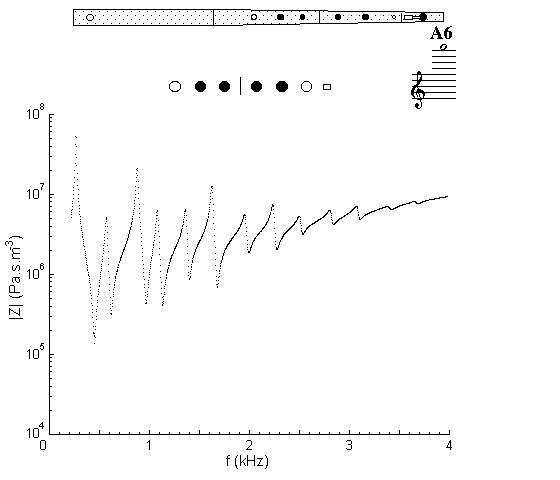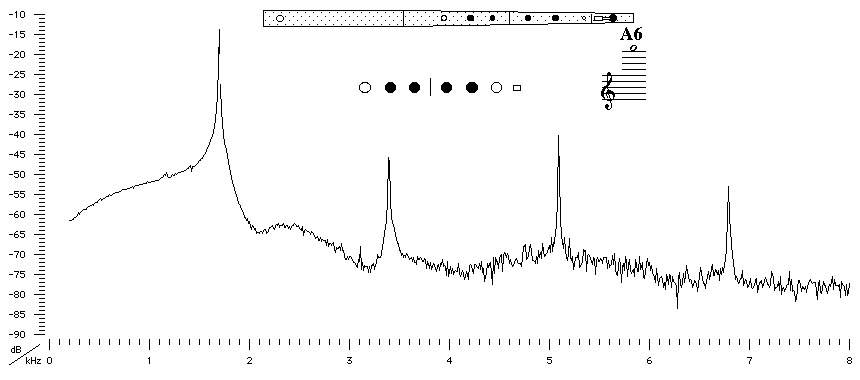| Acoustics of baroque, classical and modern flutes |
baroque flute |
A6 |

|
Acoustic and Fingering Schematic Non-specialist introduction
to acoustic impedance |
This can be considered as disturbed version of the E4 fingering, although it is not a simple register hole, as it falls somewhere between half and one third of the way along the effective bore. This far above the filter cutoff frequency, it is difficult to find simple explanations for the resonances. Note that this note operates on the sixth minimum (we are well beyond the harmonic regime in the impedance curve). Compared with that for F6, this minimum is deep and the note is clear and readily played.

Sound spectrum
of a baroque flute played using fingering for A6.
![]()
![]()
![]()
![]() You can hear A6
played by Matthew Ridley.
You can hear A6
played by Matthew Ridley.
| Acoustic measurements are available for these flutes - modern B, modern C, classical C, classical D, classical flared, baroque Sound clips are available for modern B, classical flared and baroque |
To compare flutes, it is easiest to open a separate browser window for each instrument. |